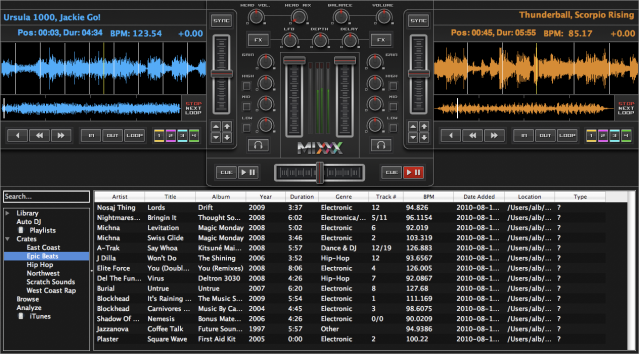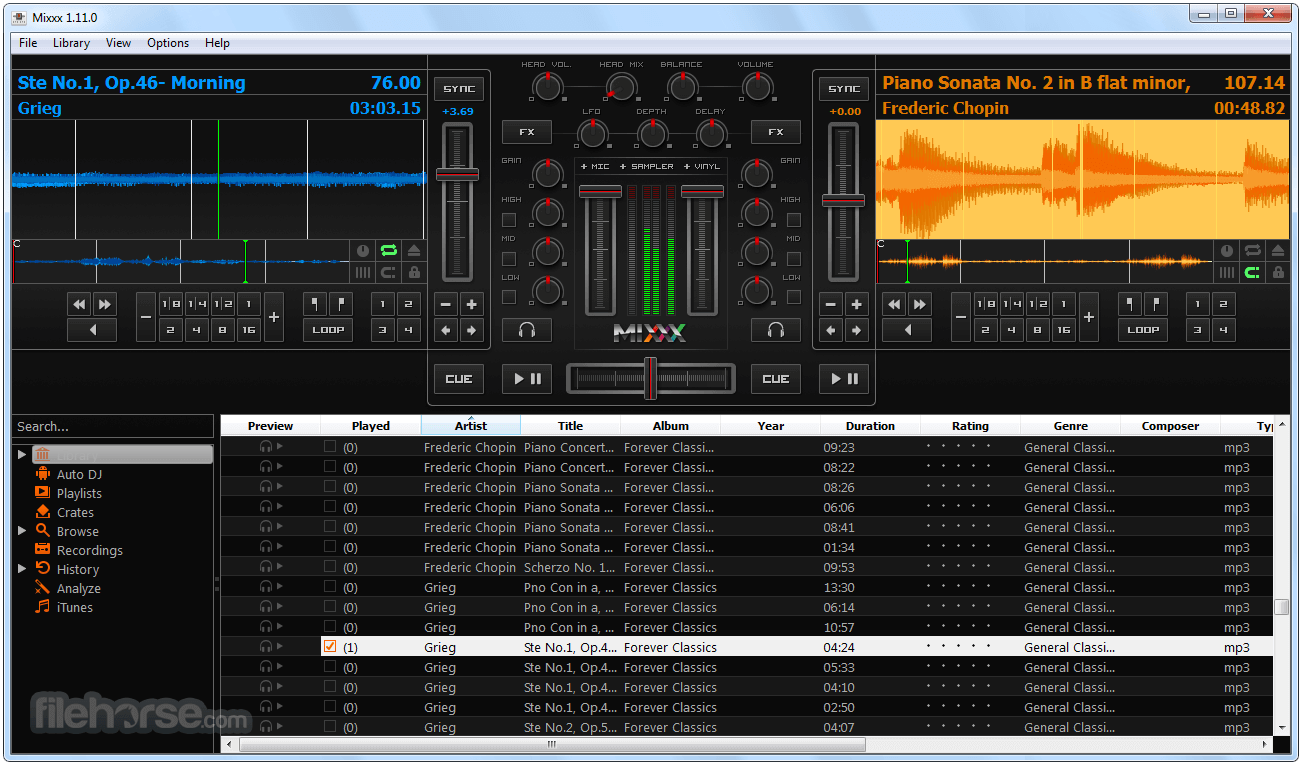

The biggest thing that many of the paid software have is something of an ecosystem that gives users a cohesive experience. Sure, Mixvibes Cross, VDJ8 and their ilk might seem like a more realistic group, but they’re all fighting a war against the buy-in of the front runners.

It’s easy to feel like stacking Mixxx up against the likes of Traktor or Serato is a bit unfair, seeing as how they’re radically different approaches to software development, but really, that’s what their competition is going to be. It’s a significant enough milestone that the team felt it deserved its own version release.
#MIXXX AUTO DJ FULL#
On top of all the stuff that was in the beta, there are a load more mappings for various hardware, including a full map for the Native Instruments Traktor Kontrol S4 mk2. Since this is essentially the 1.9 beta, you get all the juicy goodies like four decks, effects racks, loads of improvements, tweaks and UI refinements. How does it stack up against the competition? I take a quick first look at some of the features and give my thoughts. Mixxx 2.0 has been in testing for a long time (initially as 1.9 beta) and then as a rebranded as a full new release. There is such a program, and it now has lots of shiny new features, and a brand new version.

What about people doing this in their spare time? For free? And creating an application that has all the top-tier features you’d expect from modern DJ software? Would it be any good? They’re all created by paid coders and designers, using the usual means of money exchanged for goods and services. That’s not what we are going to talk about here. But it’s easy to forget that there’s lots going on outside of the holy trinity of Traktor, Serato and rekordbox: the likes of VDJ seem to be cleaning up in certain corners of the DJ market, and there’s constant innovation from the smaller developers like Algoriddim and Mixvibes. You can now map hotcue and track colours on your controller.Ĭontroller mapping has been added for Roland DJ-505, and updated for Allen & Heath Xone K2 for intro/outro cues.The digital DJ software industry is a brutal, cutthroat game at the top, something made even more evident by what’s happened with Pioneer DJ and their release of rekordbox as more than just music management software, undercutting their former BFFs, Serato. The workflow for configuring controller mappings and editing has been improved. There is also a bug fix for key detection. The improved multithreaded track analysis allows faster processing on multicore CPUs. You can now add a laptop battery widget to skins. If you right-click on the overview waveform you will see the remaining time until that point.

#MIXXX AUTO DJ SKIN#
Mixxx’s ‘LateNight’ skin has been updated. Like other DJ software, double-pressing the load button on your controller will also trigger the deck cloning feature. Intro and outro cues can be used in AutoDJ transitionsĭeck cloning, or ‘instant doubles’ is now possible by dragging and dropping between decks. You are now able to add intro and outro range cues, with automatic silence detection, and choose to show the duration of intro/outro ranges on the overview waveform. Rekordbox – You can import cue points, track colours and playlists from Rekordbox USB drives. Serato – You can import cue points, track colours and playlists from your Serato file tags and database. You can configure colours for hotcues per track, which you can also customise. If you hover the mouse over the waveform overview you will see the remaining time until that cue. You can now add hotcue colours and custom labels if you right-click the hotcue buttons or by right-clicking hotcues on the waveforms.


 0 kommentar(er)
0 kommentar(er)
